Earthquake Early Warning - Blog
2024-09-16: EEW system sends its first alert!
On September 15th, the national Earthquake Early Warning (EEW) system sent its first alert to the public, when a magnitude 6.5 earthquake occurred just south of Haida Gwaii. The EEW system determined that strong shaking would occur in the southern region of Haida Gwaii's Moresby Island, so sent an EEW message to the National Public Alerting System (NPAS).

NPAS distributed radio and television alerts throughout the area's census division, which includes the town of Sandspit; people in Sandspit told NRCan's Field Researcher, Lisa Nykolaishen, they had received the alert a few seconds before they felt shaking. NPAS is also configured to alert via cell phone towers within the area of strong shaking; in this case, however, there were no cell towers in that remote (and generally unpopulated) area of the island.
2024-08-29: Launch of EEW in BC!
Today the national Earthquake Early Warning (EEW) system was launched in British Columbia. Almost 100 core EEW stations are working together to monitor and alert for powerful earthquakes in the province, providing seconds to tens-of-seconds of warning before the arrival of strong shaking. People will be alerted through the National Public Alerting System, via smart-’sphone, radio, and television; this is fully automatic and requires no registration nor app. Critical infrastructure operators and other Technical Partners of the EEW system will soon be able to trigger automated technologies at their facilities, for example, to open doors, close valves, stop trains, and sound alarms.

To mark the occasion, Jonathan Wilkinson, Minister of Energy and Natural Resources, held a media event at North Vancouver Fire Hall No.1. The Minister noted how this initiative complements other efforts the federal government makes towards disaster risk reduction, such as research which informs the seismic provisions within the National Building Code, and that when people receive an EEW, they should assume strong shaking is imminent and protect themselves through the Drop, Cover, Hold on response. Also in attendance were Emergency Preparedness Minister Harjit Sajjan, who spoke of the importance of such a system to help reduce the impacts from powerful earthquakes which are inevitable in the province, and BC’s Minister of Emergency Management and Climate Readiness, Bowinn Ma, who spoke about how even a few seconds’s warning can trigger automated systems to reduce damage and injuries.
2024-06-13: Pacific Geoscience Center Open House a success

Earthquake Early Warning was profiled in an exhibit and a presentation by Alison Bird, at an open house last week. People took in scientific exhibits and demonstrations, presentations, children's activities, and tours of the Canadian Coast Guard vessel, Sir Wilfred Grenfell. Other topics included geophysical monitoring and research activities, ocean chemistry and biology, tidal currents, and marine charts.
Natural Resources Canada and the Department of Fisheries and Oceans held the Open House at their Institute of Ocean Sciences / Pacific Geoscience Centre on Vancouver Island, British Columbia. Starting with two days of visits by middle and high school students, the institute opened its doors to the public on Saturday. Over 1,800 people visited the campus that day.
2024-03-12: EMCR begins EEW advertising campaign in BC
British Columbia’s Ministry of Emergency Management and Climate Readiness (EMCR) has started an Earthquake Early Warning (EEW) advertising campaign, to alert people of the impending launch of the national EEW system in the province.
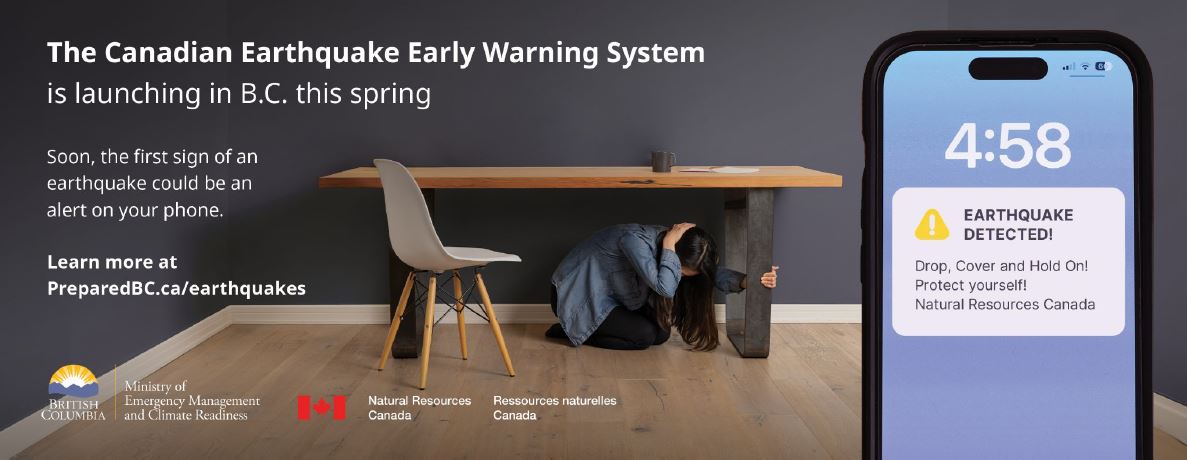
EMCR is also incorporating information on EEW into their public education materials and outreach activities, included within the popular Earthquake and Tsunami Guide. This work, funded by Natural Resources Canada, will improve awareness around earthquakes and EEW in BC, encouraging people to take protective actions when they receive an alert.
2024-02-29: EEW profiled at Geo-Congress conference


At the Geo-Congress conference in Vancouver, BC this week, NRCan seismologist, Alison Bird, joined counterparts, Bill Steele and Gabriel Lotto from the Pacific Northwest Seismic Network. They participated on a panel to discuss Earthquake Early Warning (EEW) in Canada and the United States, and were joined by Shabnam Mir-Seraji from the Canada Line rapid transit system. Canada Line has EEW technologies in place to stop trains and to open gates at their stations when a strong earthquake occurs — and their participation was especially pertinent as most conference attendees had arrived on Canada Line trains.
The panel covered several pertinent topics, including: the significant earthquakes which have happened and will happen in North America, the various actions people and systems can take to protect themselves in an earthquake, the success of the EEW system in California, Oregon, and Washington, and the imminent roll-out of the national EEW system in Canada.
NRCan Research Scientist Riddhi Dave, Alison, Bill, and Gabriel also co-hosted an “EEW in Canada and the U.S.” booth in the conference’s exhibition. They spoke with representatives from academia and industry. This conference proved an excellent opportunity to engage with critical infrastructure operators and other potential technical partners of the Canadian EEW system ahead of its roll-out this year.
2024-02-22: Half way installed in the east
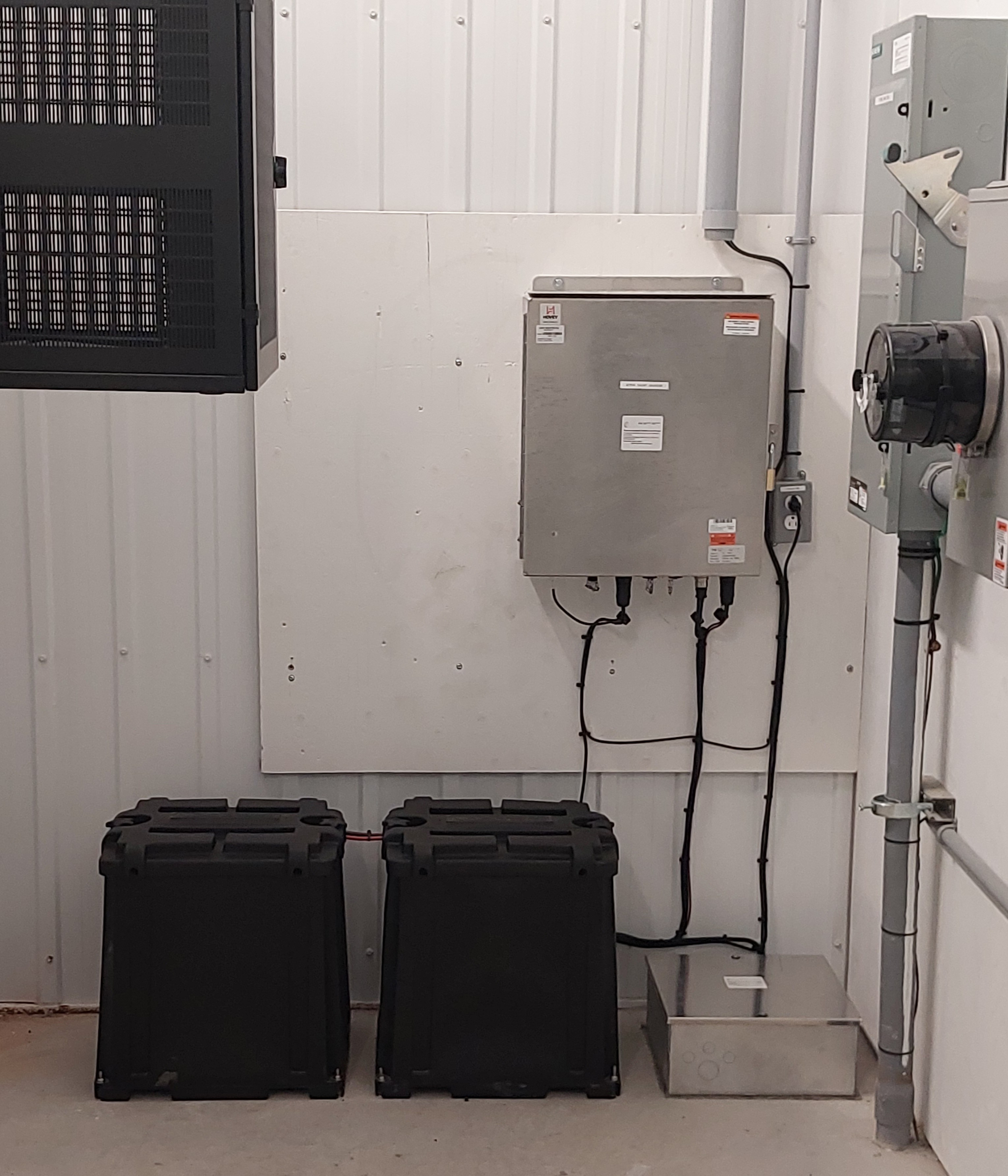

Today an Earthquake Early Warning station was established in Saint-Sauveur, Quebec. This station marks the half-way point for the installation of 224 core EEW stations in eastern Canada. This is great progress. The stations in eastern Canada are distributed over a broad region, often in locations which are challenging to access, particularly during adverse weather. When the EEW system is launched in eastern Ontario and southern Quebec this autumn, the stations will work together to monitor and alert for potentially harmful earthquakes, providing seconds to tens-of-seconds of warning before the arrival of strong shaking.
The area along the Ottawa River and Saint Lawrence Seaway has a history of damaging earthquakes and other large earthquakes will occur in the future. For instance, an Insurance Bureau of Canada study (2013) estimates that the damages from a credible magnitude 7.1 earthquake in the Quebec City region would result in losses over $60 billion. Through use of EEW technologies, these losses, plus injuries and fatalities, can be reduced considerably.
2024-01-08: Japan’s EEW system helped reduce impacts of New Year’s earthquake
On the first day of 2024, a magnitude 7.6 earthquake struck the Noto Peninsula on the west coast of the Japanese Island of Honshu. The earthquake caused violent shaking and some severe damage close to its epicentre, resulting in some fires, and it generated a tsunami. The Japanese Meteorological Agency’s (JMA) Earthquake Early Warning (EEW) system alerted critical infrastructure operations in the region, prompting Shinkansen trains to halt in central and western parts of Japan, avoiding derailment. EEW messages sent to cellular phones, televisions, and radios provided valuable seconds for people to take actions to protect themselves.
The Japanese EEW system, “Kinkyu Jishin Sokuho”, has been operating since 2007, initially alerting rail systems and hospitals, then also schools, and eventually a broad array of critical infrastructure facilities and the public.
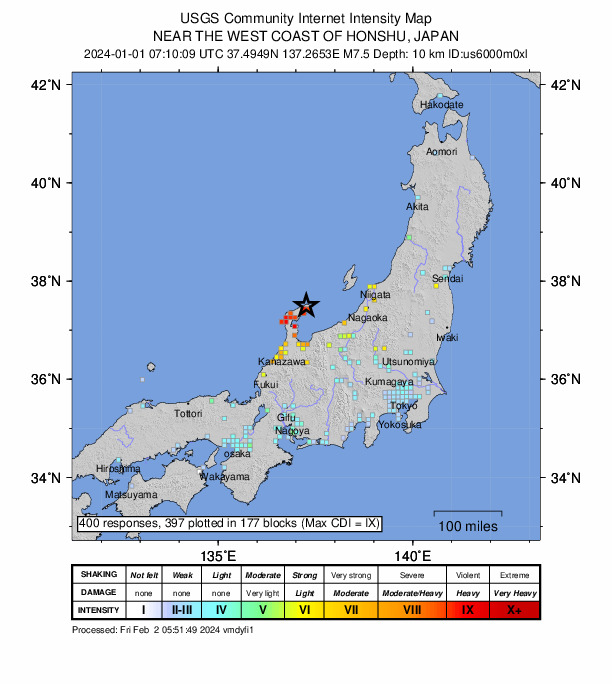
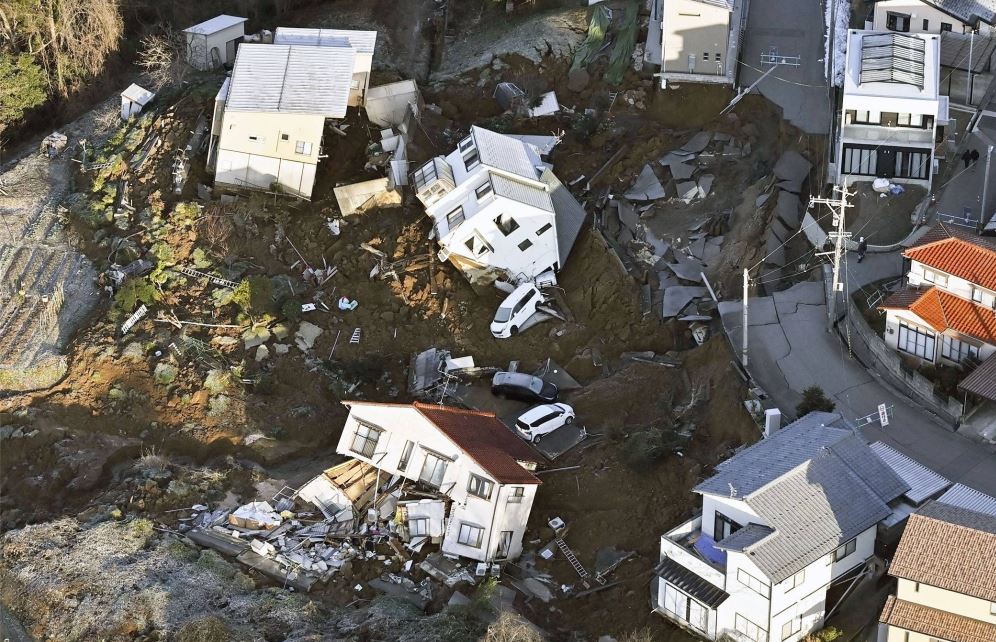
The vast majority of earthquakes in the region occur on the east coast, where the Pacific Plate subducts beneath Japan. The New Year’s earthquake occurred instead on a shallow fault, directly beneath the Noto Peninsula. Shallow earthquakes cause more damage than deeper ones because the energy is released closer to the Earth’s surface (closer to people and structures) and therefore produces stronger shaking relative to deep earthquakes, which are further from the surface.
2023-10-19: ShakeOut at ḰELSET Elementary School
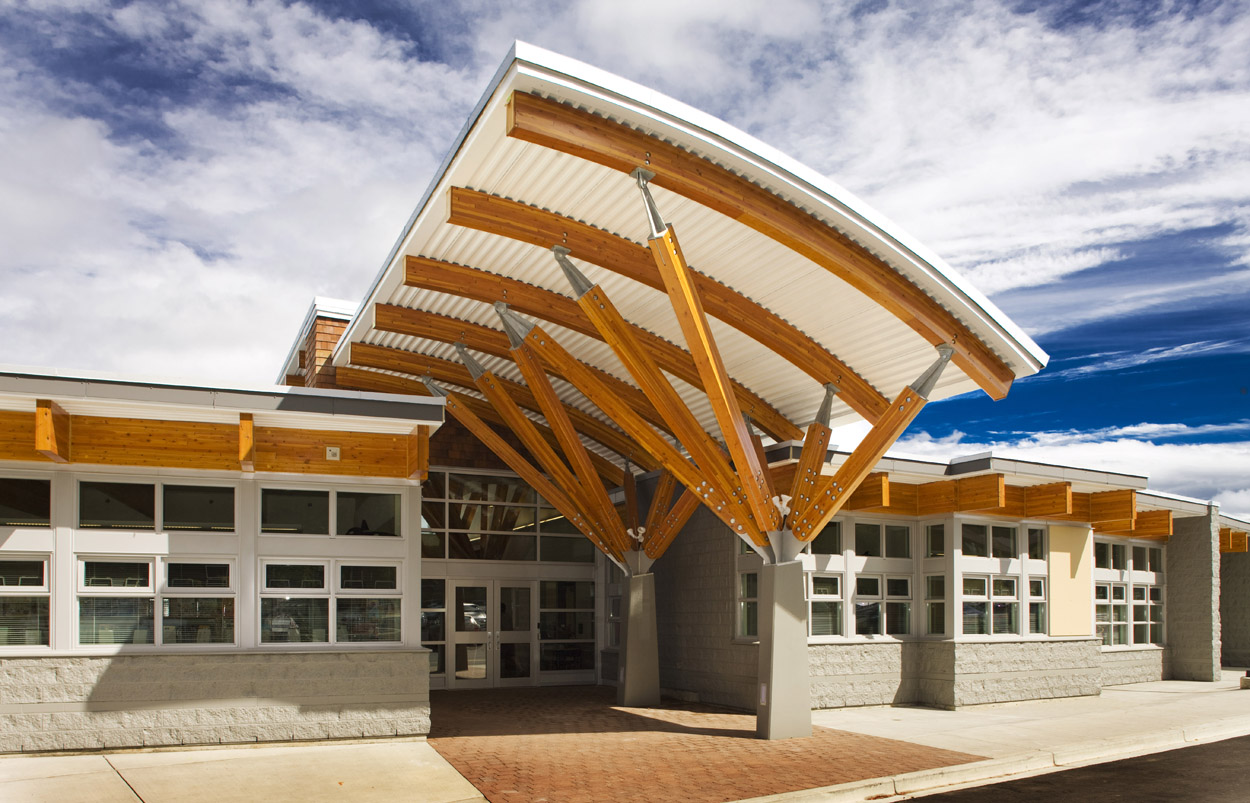
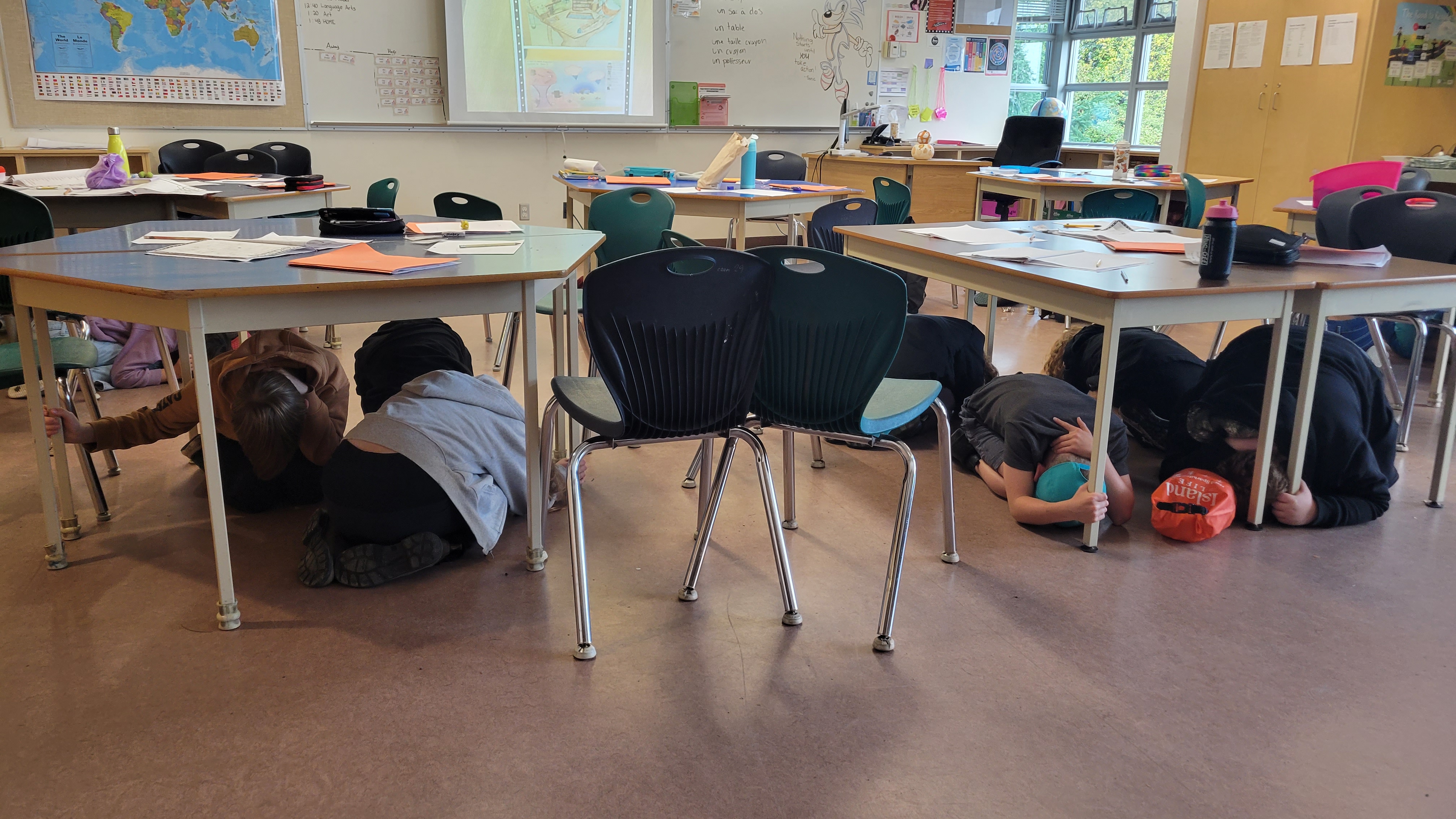
Today, was the great ShakeOut earthquake drill. Nearly 700,000 people across Canada and over 45 million around the world practised the safe response to earthquakes: to Drop, Cover, and Hold on (DCHO). It is important to practise the DCHO action, for it to become instinctive to move to a safe location when an Earthquake Early Warning (EEW) alert is received or shaking is felt.
In Quebec, GrandeSecousse (in French only) created a series of short videos to educate people of the risk of earthquakes in the province and to teach them about EEW.
In British Columbia, a ShakeOutBC media event was held at ḰELSET Elementary School on Vancouver Island. The school hosted information booths, including NRCan’s booth showcasing earthquakes, EEW, and the School Shake project.
2023-10-13: EEW topic at Understanding Risk symposium
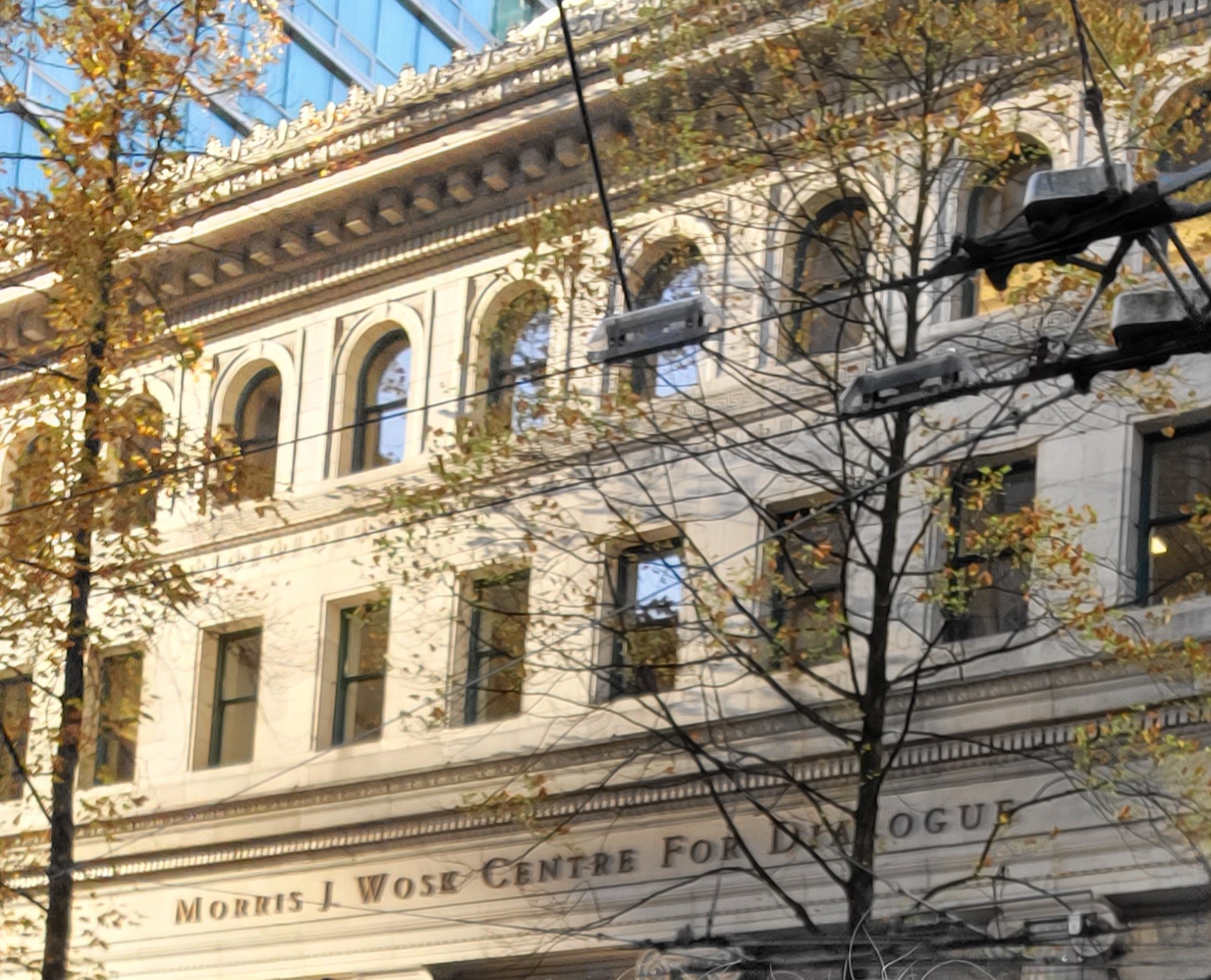
This year's Understanding Risk (URBC) symposium was focussed on an evaluation of risk reduction strategies, particularly with respect to earthquakes, floods, and wildfires. URBC symposia employ creative approaches, including panel discussions with audience participation, incorporation of Indigenous knowledge sharing, and the use of artists (through visual notes to capture key points in an easily understood format) to convey scientific concepts. These techniques and the diversity of participants leads to dynamic, productive discussions on disaster risk reduction practices.
This was an ideal venue for NRCan's Alison Bird to introduce Emergency Managers, Critical Infrastructure Operators, and engineers to the Earthquake Early Warning (EEW) system being developed for at-risk regions of Canada. The timing of the symposium, allows these groups to prepare their organizations, facilities, and communities to take safe response actions as a result of EEW alerts, which will become available in 2024. The symposium encouraged discourse between knowledge holders and practitioners, enabling NRCan to glean the needs of future technical and practical users of EEW alerts, which will facilitate the success of the EEW system.